Online businesses have now found themselves in a lead generating conundrum.
Google is referring less outgoing traffic than ever before. And the organic reach on social media is dropping every year. So, how should they be reaching new customers and target audiences?
It’s the reason why more and more businesses, in both B2B and B2C, are looking to build unique partnerships to supercharge their lead generation. Brian Peters, who heads up Strategic Partnerships at Buffer, says when partnerships are done right, they have the potential to expose both parties to an even larger base of targeted and qualified customers.
However, choosing the right partner is easier said than done, not to mention launching the right promotional campaign. Let’s look at when you should consider partnering up with another brand, and 5 examples of how to implement a marketing strategy that converts.
Successful partnerships are built on certain key factors: the companies involved have the same goals, target customer, and values.
Which is why pairing up with the right brand is the difference between a successful brand marketing partnership and one that fails. A G2 article by Hannah Tow on co-branding highlighted that, along with pros, there can be cons to brand marketing partnerships.
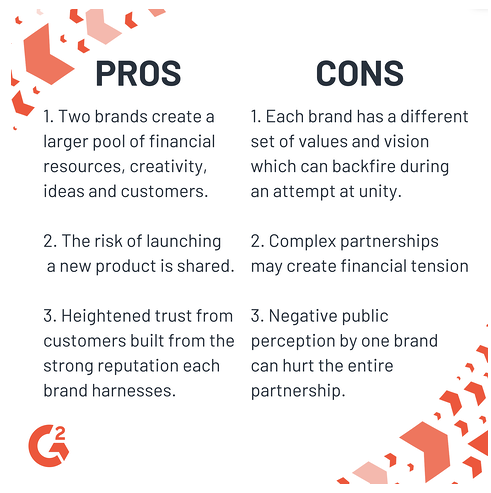
Considering these factors, before you sign up to any partnership, you need to answer some tough questions about why you’re doing it.
1. What does your product roadmap look like?
- What are you hoping to accomplish with your product in the next quarter/half/annual?
- How will this particular partnership help your company accomplish that?
2. Do your target customers match?
- Does the proposed partner have an untapped market that would benefit your brand?
3. What does an ideal partner look like for your brand?
4. Who will be responsible for what?
- What stages of the promotion will your company initiate? And what will your partner be responsible for?
- Are your resources equal?
- What will the investment look like?
As you can see, a successful partnership is one that is not only a perfect match but also one that is meticulously planned. Let’s look at five partnerships who managed to nail their marketing campaigns.
5 examples of marketing partnership for online brands
1. Starling Bank and MoneyBox
Fintech has exploded in popularity in the last couple of years. So much so that it’s become a saturated market.
Starling Bank, one of the pioneers of Fintech in the UK, needed a way to expand its market reach. So, they partnered up with Moneybox, a Fintech app that helps people save money by rounding up their transactions.
The partnership allowed Starling Bank customers also to have access to Moneybox’s suite of saving and investing tools. Under the partnership, Starling Bank customers could link their Starling account to Moneybox, round up their purchases to the nearest pound and invest their spare change.
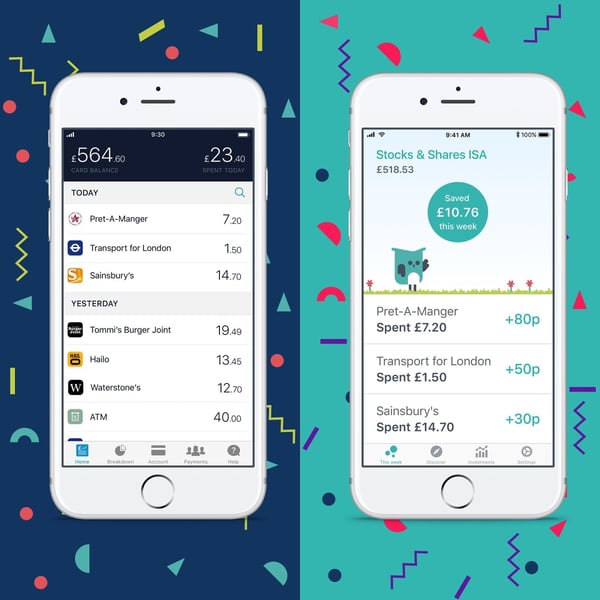
The partnership is an excellent example of—if you can’t beat ‘em, join ‘em. As Starling Bank didn’t offer savings accounts with their digital banking app, they needed a way to do it. Moneybox not only gave them a partnership, but they added a benefit to their product in the process.
How to steal it for yourself: This is a great example of how you can offer a third-party service through your own service through the use of open APIs. If you’ve got the opportunity to collaborate through open APIs and offer something more to your users, it can be a low-risk way to create a marketing partnership.
2. HubSpot and ChatFuel
If you’re trying to get your brand noticed, how about partnering up with an industry leader?
That’s exactly how the brand marketing partnership between HubSpot and ChatFuel was born. The brands joined forces to launch an eBook geared toward marketers called “The Beginner’s Guide to Building Your First Chatbot.” It helped solve a problem for HubSpot users who wanted to know more about chatbots. And it helped to put ChatFuel on the map.
Here’s how the partnership worked. The ebook is hosted over at HubSpot, and to get access, a visitor must hand over information like their name, company name, and size. All the standard lead generation stuff. But here’s the kicker. At the bottom of the landing page, there are two CTAs: one for HubSpot and one for ChatFuel.
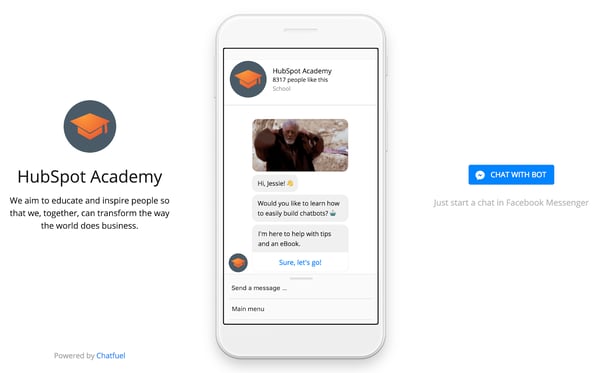
And the CTAs are why this partnership is perfect. The two companies have the same target audience (digital marketers), yet they both offer completely different products. So, they’re not competing for leads.
In their own words: “For marketers, building your first bot – something that seems brand new – can be daunting at first. Where do you begin? What should you even build? HubSpot and Chatfuel teamed up because we know you need answers to all of these questions.”
Solving problems = a lead generating machine.
How to steal it for yourself: Can you think of a brand who has the same target audience as you, but they offer a completely different product? These are the best brand marketing partnerships to build. You’ll have the same goal (brand awareness, lead generation, etc.), but you won’t be competing with each other. Just adding value and building trust amongst your target audience.
3. Sprout Social and Moz
Here’s another example of two online companies teaming up to offer up valuable information to their target audience.
Sprout Social is a social media management platform that’s well known for building out its customer base using brand partnerships. In this example, they knew their target audience (companies looking to build their traffic), would also be interested in search engine optimization solution. So, they teamed up with SEO gurus, Moz, to host a webinar.
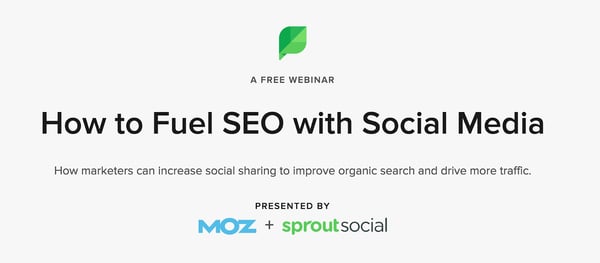
This partnership is genius as there would be a lot of Moz’s customers who may also be curious about social media marketing. Sprout Social’s Michael Patterson said the partnership boosts the webinars reach beyond what the company could have managed by themselves.
“Throughout the course of our co-marketing efforts, we’ve had the opportunity to work with more than 40 new companies. So whether these businesses chat with one of their own clients who might need more information on a social media management tool, or they themselves are in the market, we have a new arsenal of brand advocates.”
How to steal it for yourself: Stop over-complicating the idea of brand marketing partnerships! They don’t need to be elaborate, expensive, or even time-consuming. Start small and join up with a company in your space to host a free webinar or Q&A to build trust and awareness with each other’s customer bases.
4. Themuse and FitReserve
What does a job search engine have in common with wellness websites?
Well, it might be a weird connection at first. But when themuse joined up with FitReserve and a bunch of other brick-and-mortar companies in a brand partnership, it was a huge success. While themuse might be a job search engine, they’ve also got a clever marketing position that they’ve created to help people build a career (and a life) that they love.
By partnering up with a bunch of health and wellness companies and running a mega-competition, themuse managed to cement their core branding message: they’re encouraging their users to have a better quality of life.
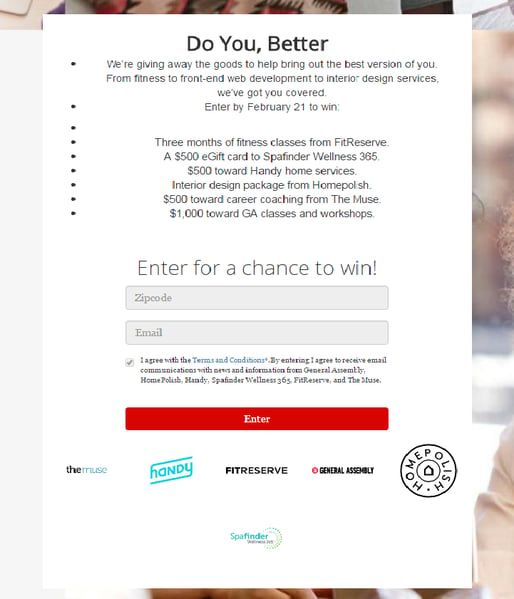
It’s a good example of a company using a strategic partnership to reinforce its underlying brand messaging: we just want you to be the best you can be.
How to steal it for yourself: Think outside the box. What message is your product portraying to your customers? Do you want them to be better? More productive? Have a better work-life balance? Find the answer, and then search for an unconventional partner that’s also doing the same thing outside of your core industry.
5. Made.com and…its whole customer base
Last but not least, e-retail furniture company Made.com has spent years forging a brand marketing partnership with…its entire customer base.
They let their customers decide which designs go from the drawing board into production. The partnership works by having new designers upload their design ideas onto the site’s TalentLAB portal.
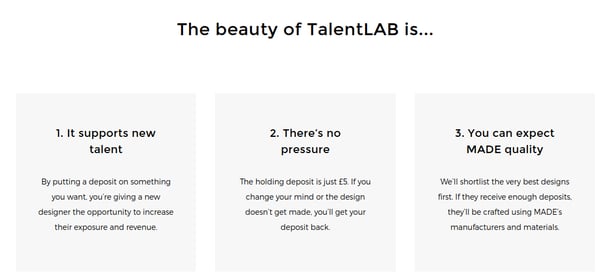
Then, their customers vote for their favourite designs. If a design gets enough votes and wins a judged contest, the company will produce the piece in bulk and make it available in their online store within a year. It’s the ultimate way of putting their customers in charge of the products they really want to buy.
“The link between the customer has gone well beyond functionality and brand,” the company’s retail customer experience consultant. It is deeper, and it helps people to express themselves in a creative way and really participate with their own tastes, with their own knowhow, and with their own style, into the life of a brand,” Francesca Danzi says.
How to steal it for yourself: Your customers are your biggest advocates. Giving them a chance to participate in your product production can give them a sense of ownership. Think about running a competition or putting your next design or product update up for discussion amongst your customers. An involved customer can turn into a lifetime loyal customer for your brand!
Conclusion
How you build a brand marketing partnership with another company is entirely up to you. Whether you utilize your software capabilities and join forces through open APIs, release an ebook, or even host a webinar, using another brand can boost your credit and your marketing capabilities.
It’s important to remember that brand marketing partnerships don’t have to be elaborate or expensive. Sometimes, the easiest way to expose your brand to an entirely new target audience is to keep it simple and add offer up a discount voucher or limited time offer.
And to make it as successful as possible, make sure you pick the right partner. Joining forces with a company that has the same goals, target customer, and values is the secret sauce to a successful partnership.
Amplify your brand marketing game with our hub chock full of over 30 useful resources to keep you on track.
